- Facilities at a Glance
- All Facilities
- Material
- Earth System and Environment
- Engineering Technology
- Space and Astronomy
- Particle and Nuclear Physics
- Energy
- Biology
- 1
- 2
- 3
Synergetic Extreme Condition User Facility(SECUF)
Create Proposal
Synergetic Extreme Condition User Facility (SECUF) aims at the discovery of new materials/phenomena/mechanisms triggered by advanced extreme physical conditions such as low temperature down to 1 mK, high pressure up to 300 GPa, high magnetic field up to 30 T, and ultra-fast laser pulse short then 100 as. It is a user facility open to academic and industrial users in China and world-wide to carry out material preparation, physical property characterization, quantum manipulation, and ultra-fast dynamic process investigations at combined extreme conditions that generally not available in users’ home institutions. SECUF is constructed under a joint partnership between the Institute of Physics, Chinese Academy of Sciences, and Jilin university. Since the beginning of 2023, all platforms have entered into the working status, which contains twenty-three experimental stations available to the users as follow.
Equipment
-

A1 Ultra-low temperature high pressure physical property measurements - diamond anvil cell station
Click here for more details
Ultra-low temperature high pressure physical property measurements - diamond anvil cell (DAC) station has a system equipped by a 14 T helium free superconducting magnet and helium free cryogenics with large inner diameter. The lowest temperature can reach 500 millikelvin. The inner diameter of cryogenics cavity is about 60 millimeters and is suitable for most of varisized high-pressure cells. This system can be used to perform the measurement of high-pressure resistance, magtroresistance, and Hall coefficient. Meanwhile, the station provides users the microscope, Raman spectrometer and beryllium-copper high-pressure cell for the studies on the physical properties of solid materials at extreme conditions.
-
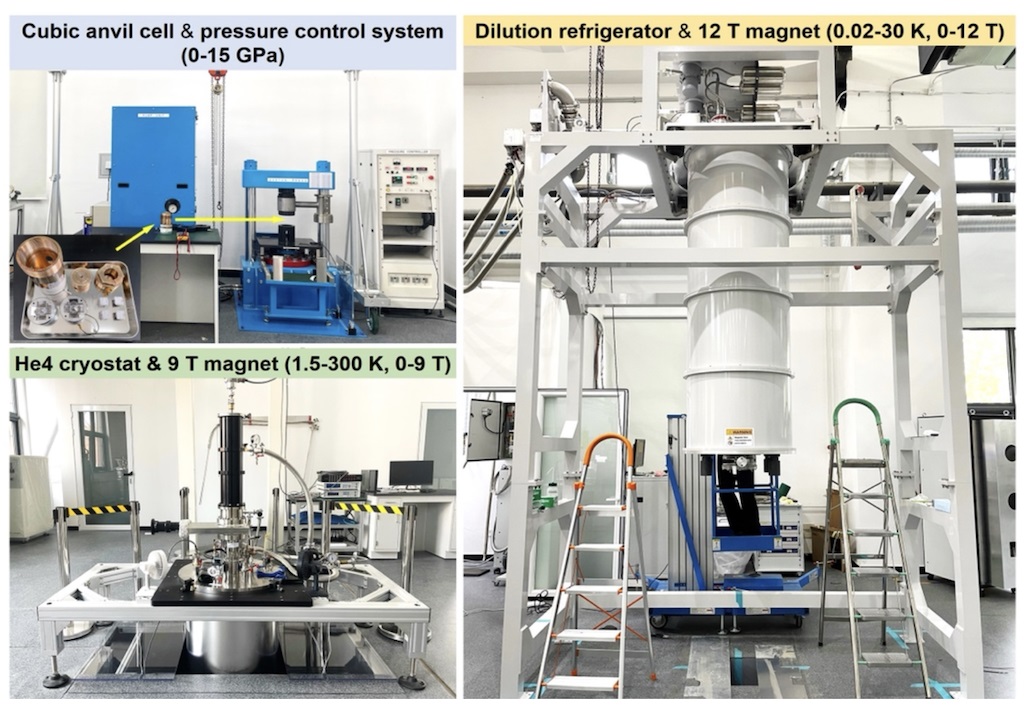
A2 Ultra-low temperature high pressure physical property measurements - cubic anvil cell station
Click here for more details
Users who wish to apply for experimental stations that are not open in this round may contact the stations individually. (A2 Ultra-low temperature high pressure physical property measurements - cubic anvil cell station,A7 Ultra-low temperature high magnetic field scanning tunneling microscopy station, C3 Ultra-low temperature high magnetic field quantum transport and manipulation experimental station, C4 Low-temperature high magnetic field electron transport and spectroscopic measurement station, D5 Ultrafast electron diffraction experimental station).
Ultra-low temperature high pressure physical property measurements - cubic anvil cell (CAC) station aims to regulate the quantum states of matters via accurate physical-property measurements under high hydrostatic pressures. This station adopts a unique miniature CAC that can generate hydrostatic pressures up to 15 GPa and integrates it with specially designed cryostat and superconducting magnet; it provides users the option to measure physical properties such as electrical transport, magnetic susceptibility, and AC specific heat under multiple extreme conditions including high hydrostatic pressure, extremely low temperature and strong magnetic field. New measurement techniques can also be jointly developed according to research needs. This station provides two sets of cryostat and superconducting magnet systems for use with CAC: (1) a He4 cryostat and 9 T magnet unit, (2) a dilution refrigerator and 12 T magnet unit, which can be used for high-pressure physical-property measurements under conditions of 1.5-300 K, 0-9 T and ~0.02-30 K, 0-12 T, respectively. The CAC adopts three-axis compression geometry and the sample is immersed in the liquid pressure transmitting medium. These factors ensure an excellent hydrostatic pressure conditions in CAC and thus are conducive to obtaining the intrinsic pressure effects and the evolutions of the quantum state of matters.
-
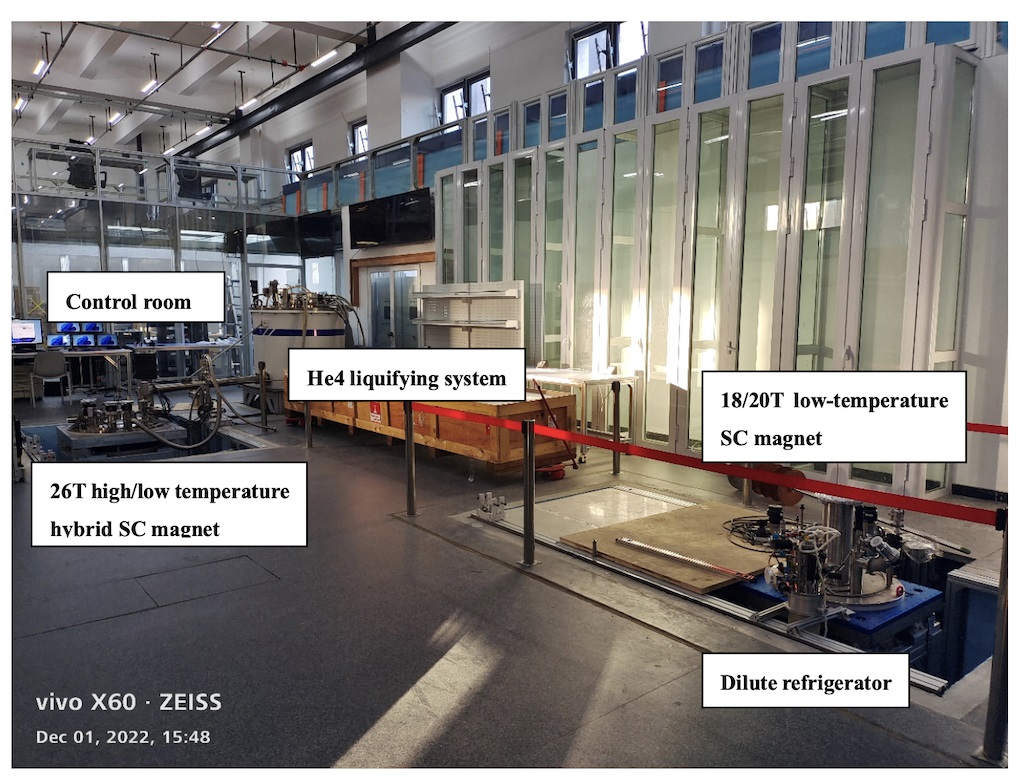
A3 Ultra-low temperature high magnetic field quantum oscillation experimental station
Click here for more details
Ultra-low temperature high magnetic field quantum oscillation experimental station consists of two magnet systems, one is 26 T high and low temperature hybrid super-conducting magnet system, and low temperature super-conducting magnet system. The two super-conducting systems can share one dilute refrigerator with rotator structure, which temperature range is 30 mK – 1.2 K. Each magnet system has its own VTI insert, which temperature range is 1.5 K – 300 K. The corresponding sample rods also have rotator structure. The available measurement system includes: 1. TDO measurement system, 2. Nano volt low level measurement system. User can also collaborate with the sub-system and develop other and new measurement systems, like high pressure, and spectrum-scopey systems etc.
-
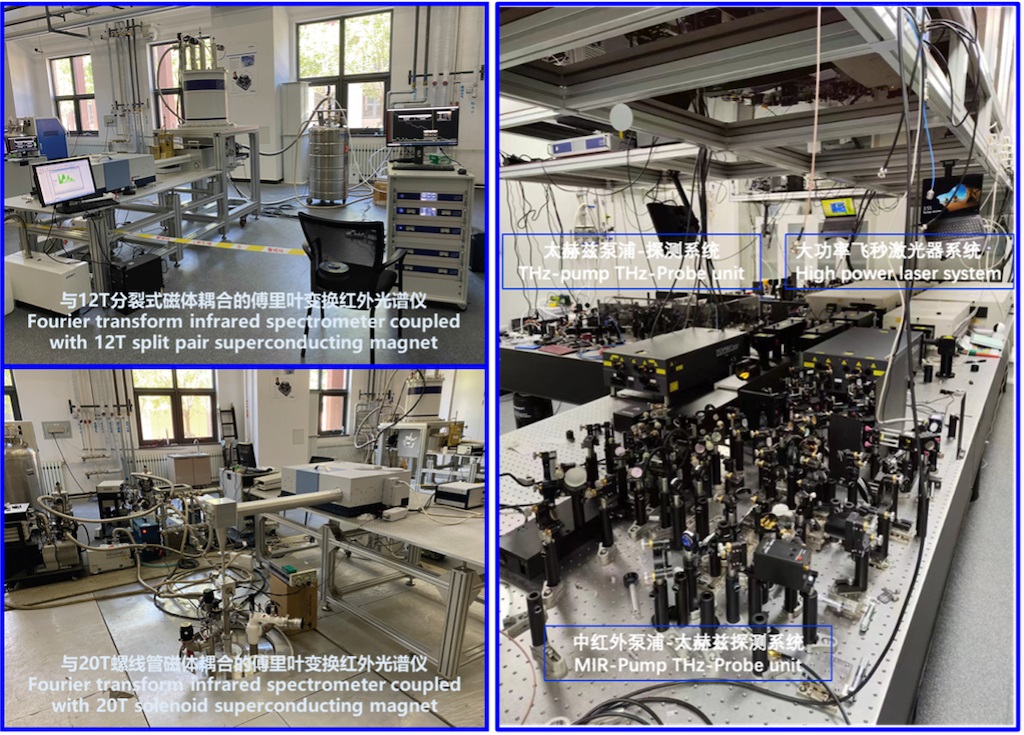
A4 Infrared and terahertz spectra measurement station under extreme conditions
Click here for more details
Magneto-infrared spectroscopy measurement unit mainly includes: (1) the Fourier transform infrared spectrometer coupled with the 12 T split pair superconducting magnet: the energy range of the optical spectra is from 30 to 25000 cm-1, the energy resolution can be 0.15 cm-1, the temperature range of the measured samples is from 4.2 to 300 K, the highest magnetic field is 12 T; (2) the Fourier transform infrared spectrometer coupled with the 20 T solenoid superconducting magnet: the energy range of the optical spectra is from 30 to 25000 cm-1, the energy resolution can be 0.15 cm-1, the lowest sample temperature is 4.2 K, the highest magnetic field is 20 T.
-

A4 Infrared and terahertz spectra measurement station under extreme conditions
Click here for more details
Magneto-infrared spectroscopy measurement unit mainly includes: (1) the Fourier transform infrared spectrometer coupled with the 12 T split pair superconducting magnet: the energy range of the optical spectra is from 30 to 25000 cm-1, the energy resolution can be 0.15 cm-1, the temperature range of the measured samples is from 4.2 to 300 K, the highest magnetic field is 12 T; (2) the Fourier transform infrared spectrometer coupled with the 20 T solenoid superconducting magnet: the energy range of the optical spectra is from 30 to 25000 cm-1, the energy resolution can be 0.15 cm-1, the lowest sample temperature is 4.2 K, the highest magnetic field is 20 T.
-
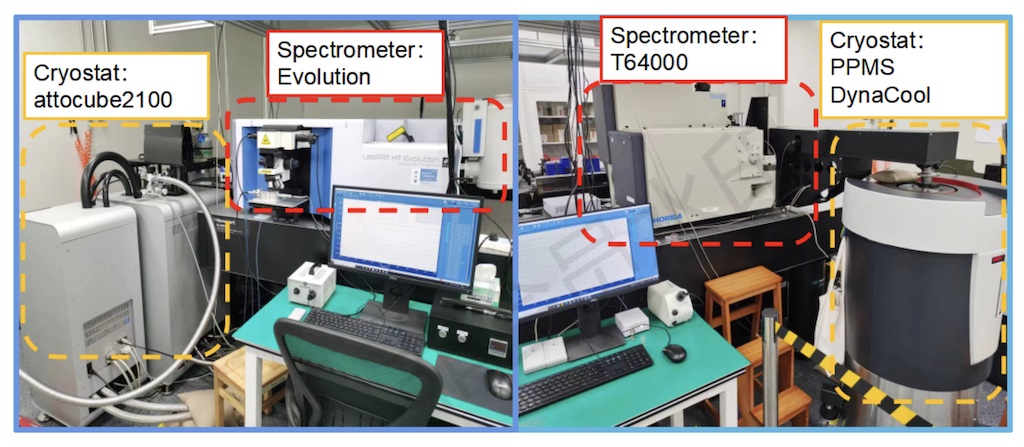
A5 Raman spectrum measurement station under extreme conditions
Click here for more details
Raman spectrum measurement station under extreme conditions consists of Raman spectrometer (HR-evolution/T64000), cryostat (attocube2100/ PPMS dynaCool), high pressure pack (TozerDAC) and other equipment. Our station is mainly used for the Raman research of solid materials at low temperatures down to 1.8 K, strong magnetic fields up to 14 T and high pressure up to ~30 GPa. In addition, the Raman spectrometer is equipped with four different wavelength lasers (473, 532, 633, 785 nm), which can achieve a minimum of 10 cm-1 measurement.
-
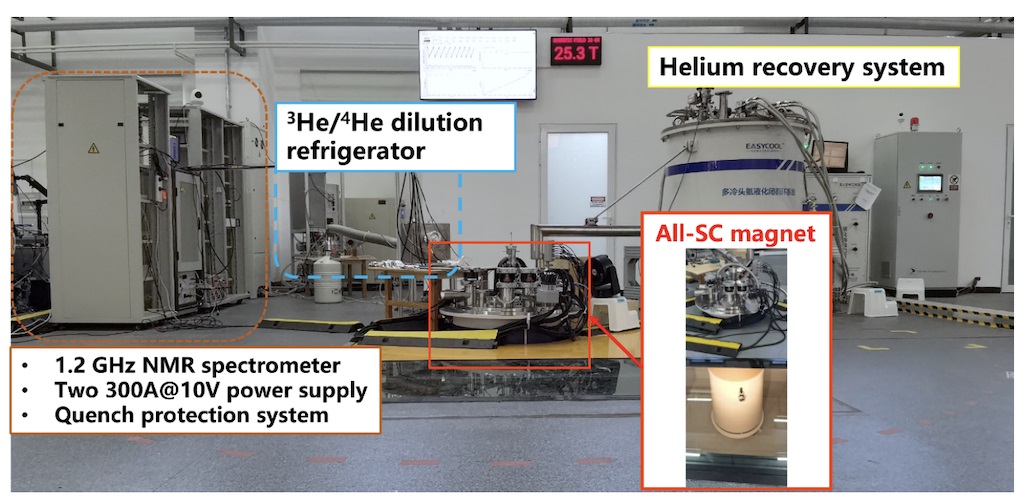
A6 High magnetic field nuclear magnetic resonance experimental station
Click here for more details
High magnetic field nuclear magnetic resonance (NMR) experimental station consists of the all-superconducting magnet, the variable temperature insert (VTI), the dilution refrigerator (DR), the magnetic resonance measurement system, and the helium liquefier system. Our station is mainly used to study solid materials at low temperatures down to 20 mK and strong magnetic fields up to 26 T. Compared with the water-cooling resistive magnet, the energy consumption of the all-superconducting magnet is reduced by three orders of magnitude, while the magnetic field's spatial homogeneity and temporal stability are significantly improved. The all-superconducting magnet can work stably and continuously with the helium recovery system. At present, we will continue upgrading the system, which is expected to perform high-resolution NMR, magnetic resonance imaging, and high-pressure NMR soon.
-
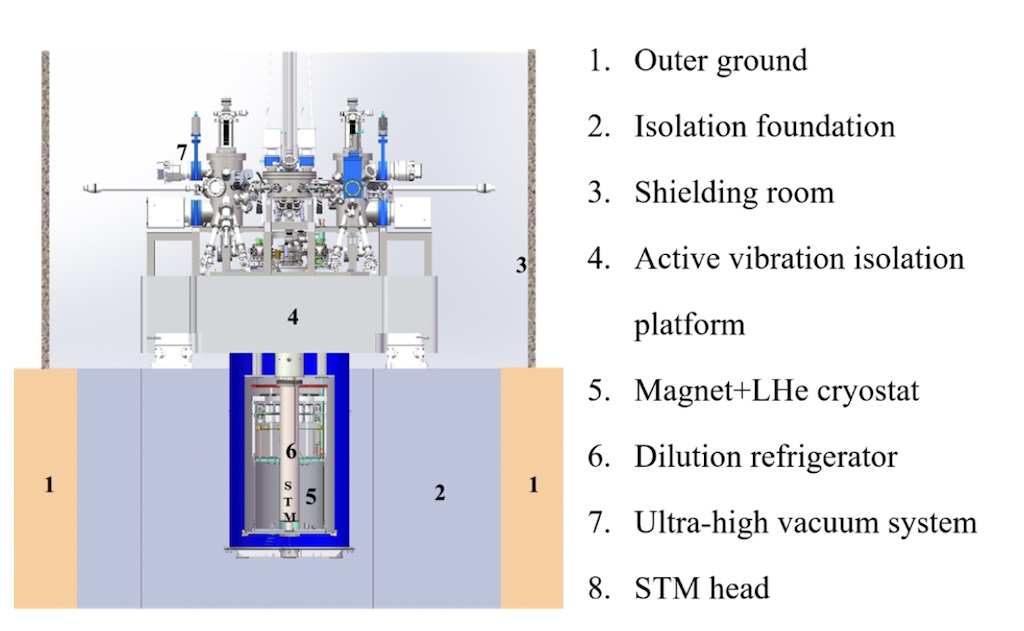
A7 Ultra-low temperature high magnetic field scanning tunneling microscopy station
Click here for more details
Users who wish to apply for experimental stations that are not open in this round may contact the stations individually. (A2 Ultra-low temperature high pressure physical property measurements - cubic anvil cell station,A7 Ultra-low temperature high magnetic field scanning tunneling microscopy station, C3 Ultra-low temperature high magnetic field quantum transport and manipulation experimental station, C4 Low-temperature high magnetic field electron transport and spectroscopic measurement station, D5 Ultrafast electron diffraction experimental station).
Ultra-low temperature high magnetic field scanning tunneling microscopy station is mainly composed of dilution refrigerator (DR), superconducting magnet, ultra-high vacuum system, vibration isolation-electromagnetic shielding unit and STM measurement unit. The base temperature of STM head can reach as low as 10 mK and the highest magnetic field is 20 T. By optimizing the RF filter, vibration damping and reducing the noise in the measurement electronics, the spatial resolution, energy resolution and stability of STM measurement can be enhanced to a competitive level. The home-made STM head is mounted on the bottom plate of the top-loading DR insert. The ultra-high vacuum system provides the in situ treatments of sample surface and growth of film materials.
-
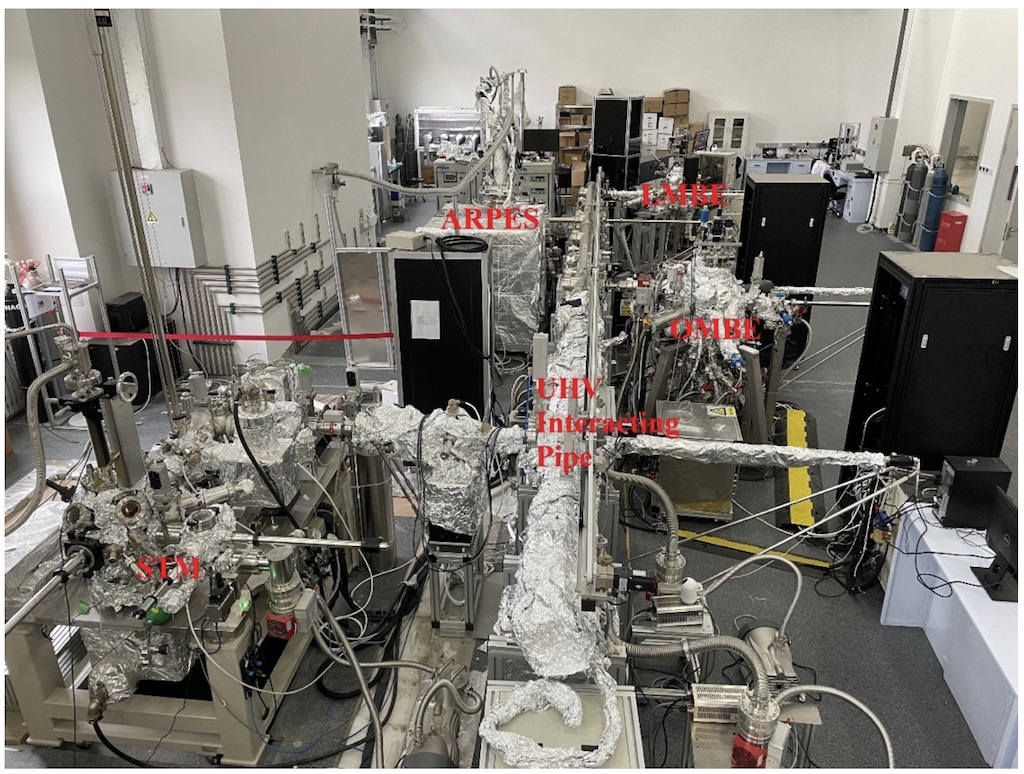
A8 Low-temperature in-situ STM-ARPES experimental station
Click here for more details
Low-temperature in-situ STM-ARPES experimental station consists of STM, ARPES, OMBE, and LMBE, which are interconnected by an ultra-high-vacuum pipe. The function of this experimental station is epitaxial growth of single-crystal films and in-situ measurements of electronic structures in real/momentum space.
-
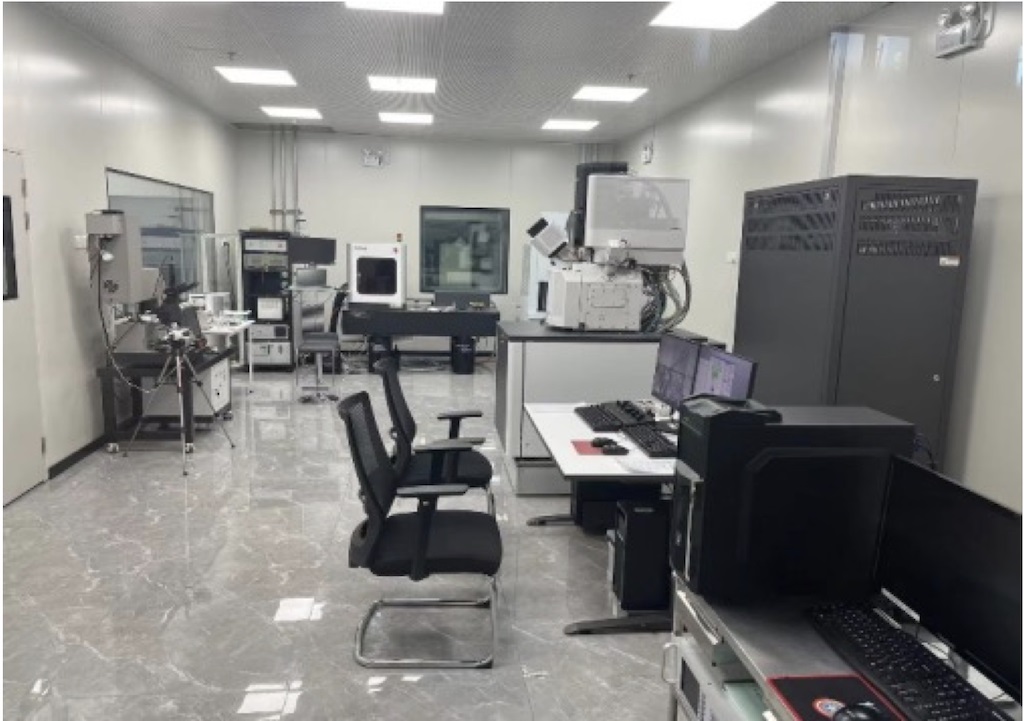
A9 High-pressure synergetic measurement station
Click here for more details
In the High-pressure synergetic measurement station (HP-SymS) , we developed ultrahigh-pressure devices based on diamond-anvil cell techniques, with a target pressure up to 300 Gpa. With the use of cryostat and magnet, we can reach 300 Gpa–2.6 K–9 T and conduct simultaneous measurements of the electrical-transport property and Raman/Brillouin spectroscopy. With resistance heating and laser heating, we can reach temperatures of at least 1500 and 5000 K, respectively, coupled with Raman/Brillouin spectroscopy measurements. Some designs of supporting devices, such as a femtosecond laser gasket-drilling device, electrode-deposition device, and the gas-loading device, are also constructed in HP-SymS.
-
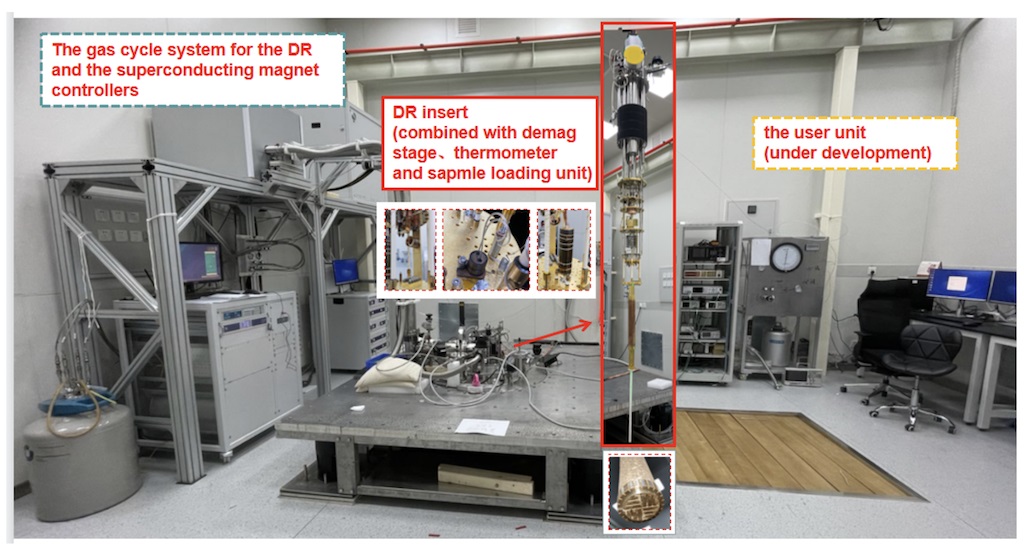
C1 Sub-millikelvin experimental station
Click here for more details
Sub-millikelvin experimental station is constructed on a commercial powerful dilution refrigerator with a home-made adiabatic nuclear demagnetization system, which can provide extreme conditions of ultra-low temperature (below 1 mK) and strong magnetic field (up to 16 T). Equipped with high-precision electrical measurement instruments including lock-in amplifiers, pre-amplifiers and low-noise source measure units, the station has a noise level as low as 10 nV by strictly multi-stage filtering and optimized grounding. This makes it an ideal measurement platform for the study of nanoscale electronics, topological quantum computing, physical property measurements and manipulations of strong correlated electron systems. At present, this station consists of adiabatic nuclear demagnetization measurement unit and dilution refrigerator measurement unit. The dilution refrigerator measurement unit is composed of a commercial top-loading dilution refrigerator, which is designed for quick sample screening for the Adiabatic nuclear demagnetization measurement.
-
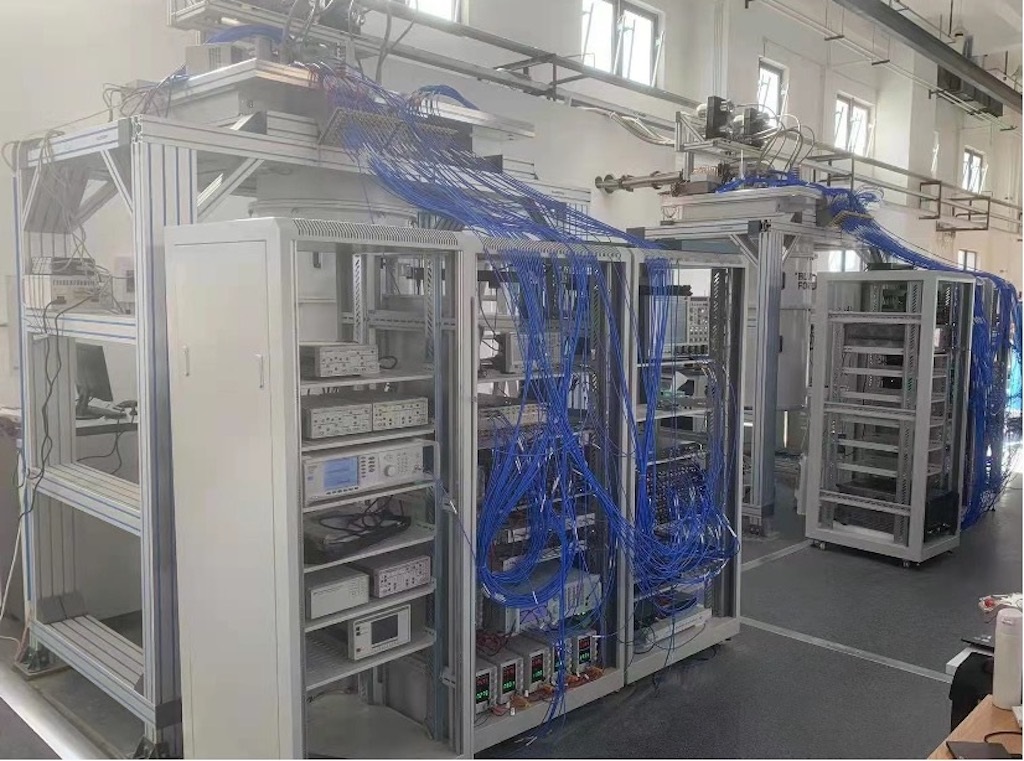
C2 Ultra-low temperature experimental station for manipulation of superconducting quantum devices
Click here for more details
Users who wish to apply for experimental stations that are not open in this round may contact the stations individually. (A2 Ultra-low temperature high pressure physical property measurements - cubic anvil cell station,A7 Ultra-low temperature high magnetic field scanning tunneling microscopy station, C3 Ultra-low temperature high magnetic field quantum transport and manipulation experimental station, C4 Low-temperature high magnetic field electron transport and spectroscopic measurement station, D5 Ultrafast electron diffraction experimental station).
Ultra-low temperature experimental station for manipulation of superconducting quantum devices is equipped with several self-developed superconducting quantum bit chips, which provide remote control services through the cloud platform. Users not only can log in to the website( http://quafu.baqis.ac.cn ), but also can operate the cloud platform on the web page, or download the python toolkit pyquafu on your local computer for programming. The experimental station also provides characterization and testing services for superconducting quantum chips. At present, the experimental station has two independent measurement and control platforms for quantum chips, and provides remote access interfaces. The hardware equipment includes dilution chiller, arbitrary wave generator, microwave signal generator, signal acquisition system, vector network analyzer, etc.
-
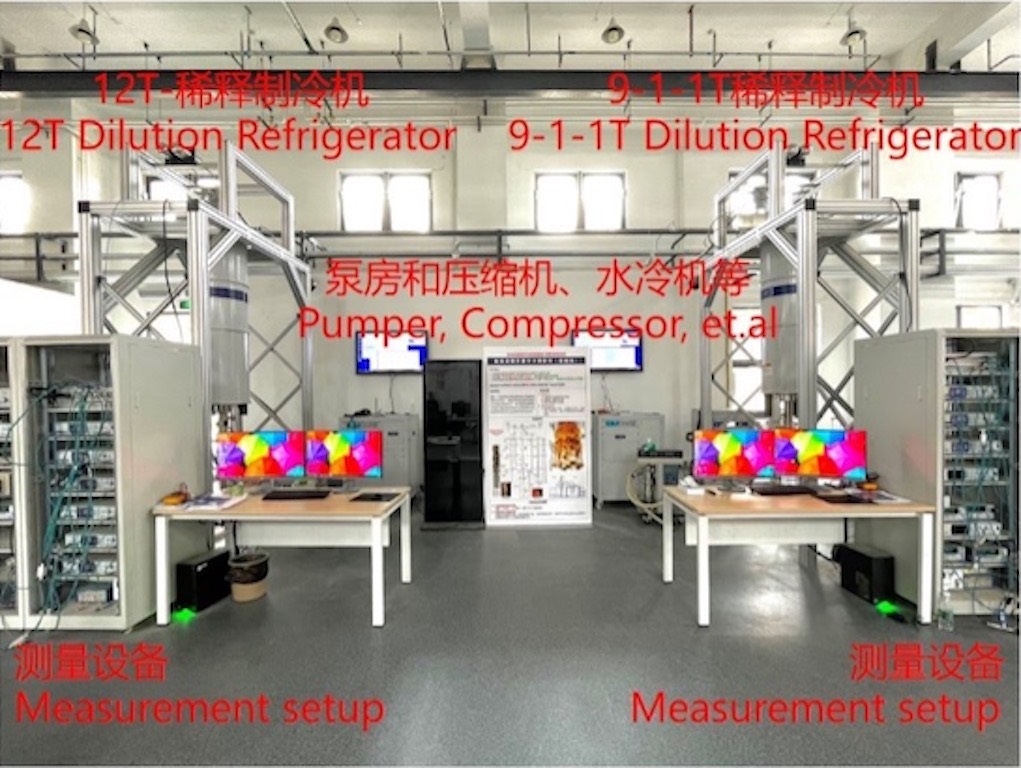
C3 Ultra-low temperature high magnetic field quantum transport and manipulation experimental station
Click here for more details
Users who wish to apply for experimental stations that are not open in this round may contact the stations individually. (A2 Ultra-low temperature high pressure physical property measurements - cubic anvil cell station,A7 Ultra-low temperature high magnetic field scanning tunneling microscopy station, C3 Ultra-low temperature high magnetic field quantum transport and manipulation experimental station, C4 Low-temperature high magnetic field electron transport and spectroscopic measurement station, D5 Ultrafast electron diffraction experimental station).
The phase coherence of quantum states needs to be maintained as long as possible in the operation process, so that the quantum information will not be lost. Therefore, the relevant experiments must be carried out under the extreme low temperature. Ultra-low temperature high magnetic field quantum transport and manipulation experimental station (two liquid-helium-free dilution refrigerators) is equipped with multi-channel microwave and low-frequency / DC measurement lines, multi-temperature & level signal filtering, isolation and amplification system, and measurement and control instruments such as DC voltmeter and phase-locked amplifier at room temperature. Both sets of equipment can achieve extremely low temperature below 30 mk, and the superconducting magnets are 12 T uniaxial magnet and 9-1-1 T vector magnet respectively.
-
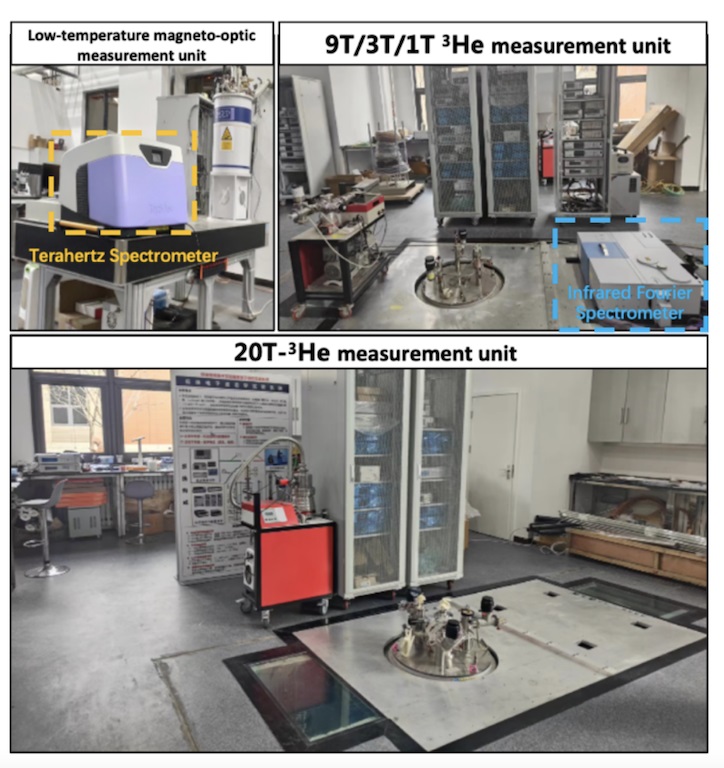
C4 Low-temperature high magnetic field electron transport and spectroscopic measurement station
Click here for more details
Users who wish to apply for experimental stations that are not open in this round may contact the stations individually. (A2 Ultra-low temperature high pressure physical property measurements - cubic anvil cell station,A7 Ultra-low temperature high magnetic field scanning tunneling microscopy station, C3 Ultra-low temperature high magnetic field quantum transport and manipulation experimental station, C4 Low-temperature high magnetic field electron transport and spectroscopic measurement station, D5 Ultrafast electron diffraction experimental station).
Low-temperature high magnetic field electron transport and spectroscopic measurement station is an advanced experimental system by incorporating quantum transport measurements and spectroscopy measurements under extreme conditions including low temperatures and high magnetic fields, which provides a unique tool to investigate the novel properties of quantum materials, topological quantum states, and manipulations of quantum devices. The low temperature and strong magnetic field environment is provided by two sets of home-made 3He refrigerator equipped with 20 T and 9 T/3 T/1 T superconducting magnet, respectively. The station also provides a SM4000 Spectromag magneto-optical Dewar measurement unit to make quick sample screening at higher temperatures (2-300 K) and in lower magnetic fields (10 T). Spectroscopy measurement instruments include a millimeter wave network analyzer (10 MHz -100 GHz), a microwave spectrum analyzer (3 Hz -75 GHz) and a microwave signal generator (250 kHz - 67 GHz). Electrical measurement instruments include lock-in amplifiers, pre-amplifiers and low-noise source measure units. By carefully electromagnetic shielding and electrical grounding, the station has a noise level as low as 10 nV.
-
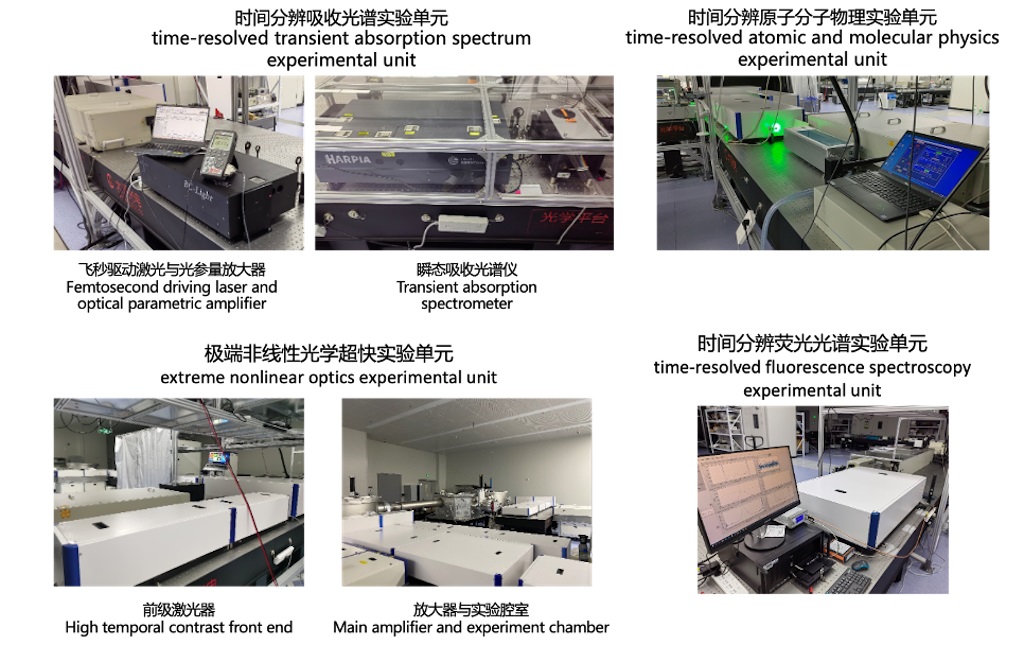
D1 Femtosecond dynamics experimental station
Click here for more details
Femtosecond dynamics experimental station is a comprehensive experimental platform for ultrafast scientific research based on different femtosecond laser light sources. It will provide users with a wide spectral range and multi-purpose ultrafast scientific research device to study the dynamics of atoms, molecules, liquids and the lattice in solids on the femtosecond time scale. The experimental station consists of a time-resolved absorption spectroscopy experimental unit, a time-resolved atomic and molecular physics experimental unit, an extremely nonlinear optics experimental unit and a femtosecond time-resolved fluorescence spectroscopy experimental unit.
-
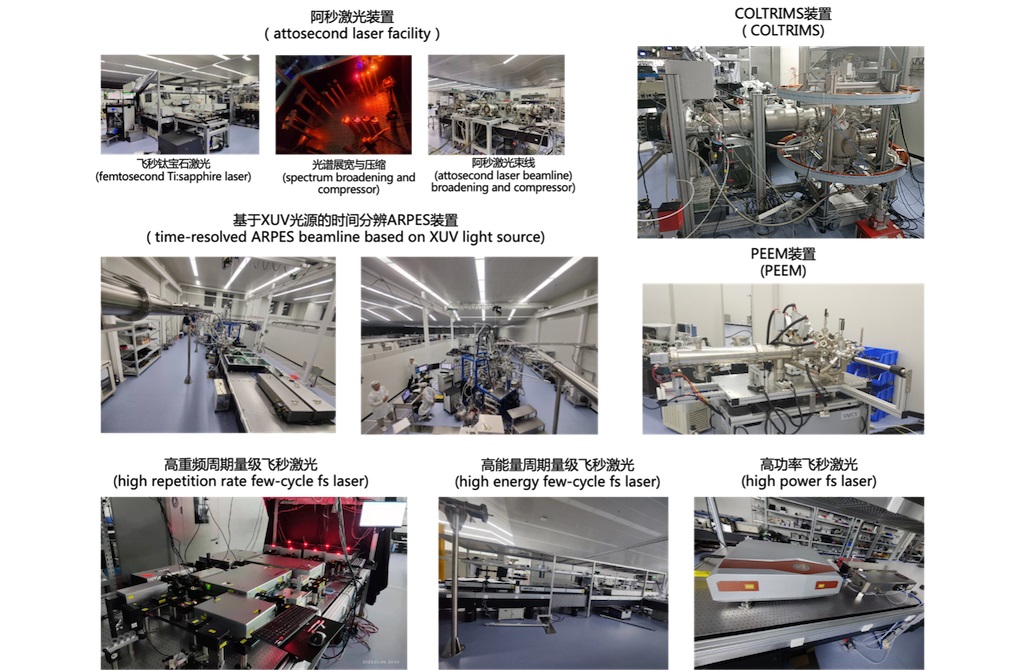
D2 Attosecond dynamics experimental station
Click here for more details
Attosecond dynamics experimental station is based on attosecond pulses and high harmonic generation (HHG) light source in the extreme ultraviolet (XUV) range in combination with photoelectron spectroscopy such as angle-resolved photoemission spectroscopy (ARPES), cold target recoil ion momentum spectroscopy (COLTRIMS), photoemission electron microscopy (PEEM) and time of flight spectrometer (TOF), as well as the extreme cryogenic condition. The station is capable of investigating electron ultrafast dynamics in atoms, molecules, surfaces and solids with high temporal resolution, momentum resolution, energy resolution and spatial resolution in order to understand and manipulate the microscopic and corresponding macroscopic phenomenon in physics, chemistry, biology and medicine. The station includes attosecond laser facility, time-resolved ARPES, time-resolved PEEM, time-resolved COLTRIMS, and four femtosecond lasers with different specifications.
-
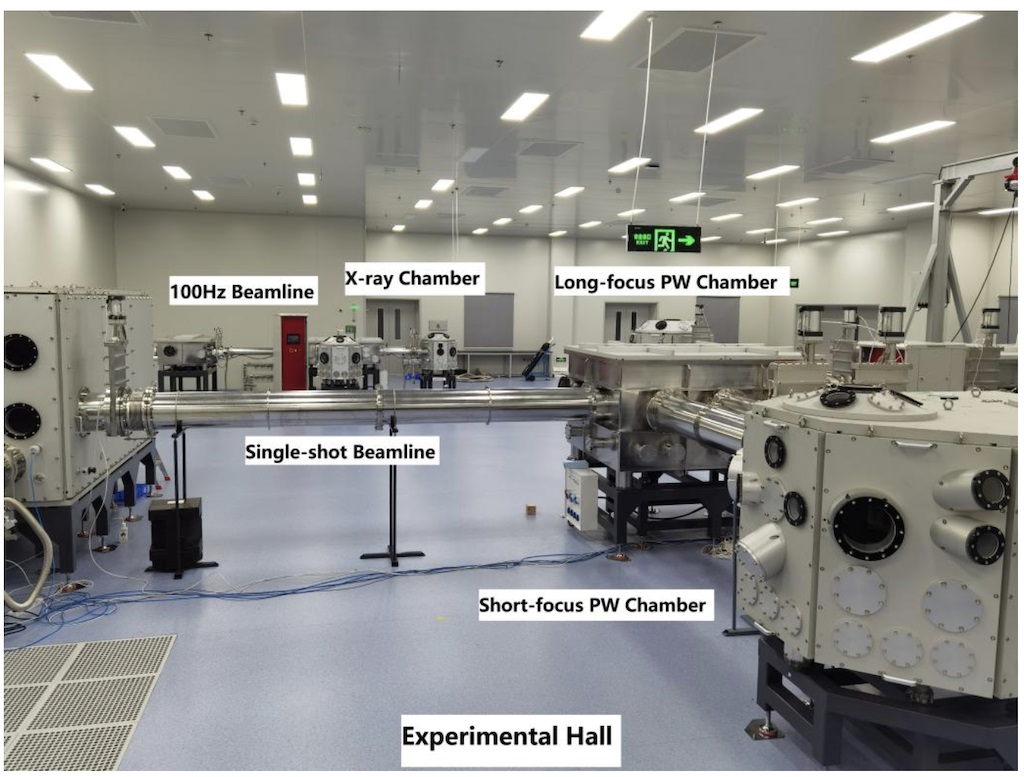
D3 Ultrafast X-ray dynamics experimental station
Click here for more details
Ultrafast X-ray dynamics experimental station is to use the ultra-fast X-ray pulse generated by the interaction of femtosecond intense laser and target as the probe light, combined with the naturally synchronized driving laser as the pump light, to carry out ultra-fast time-resolved laser pumping X-ray detection research on material samples, which can provide four-dimensional ultra-fast research capabilities for photosynthesis, Auger process, lattice vibration process, etc. The main part of the station consists of an ultra clean laboratory, an ultra short and ultra intense femtosecond laser, a vacuum chamber assembly and X-ray sources. The ultrashort and ultraintense laser driver can provide two levels of output, corresponding to different X-ray beam modes respectively: the front level is 100 Hz, 3 TW output, used for X-ray beam lines in repetitive mode; The rear stage is 1 PW single shot output, which is used for ultra strong X-ray beam in single shot mode.
-
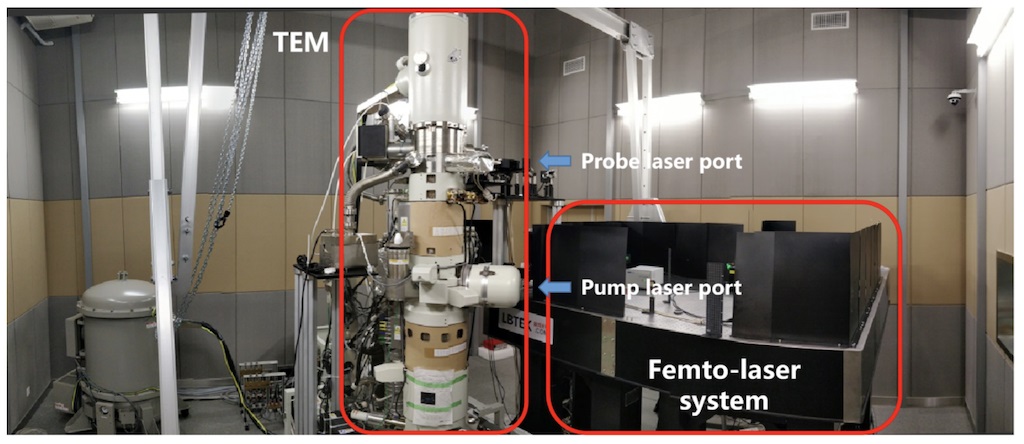
D4 Ultrafast electron microscopy station
Click here for more details
Ultrafast electron microscopy station enables studies of structural dynamics in solid-state and biological systems with nanometer- and sub-picosecond spatiotemporal resolution. UEM facilities (ultrafast TEM and SEM) integrate the cutting-edge technologies of ultrashort laser and electron microscopy to provide ultrafast imaging, diffraction, energy spectroscopy, and photon-induced near-field electron microscopy with high spatiotemporal resolution. The main focus of the UTEM experimental station is the development and innovation of UEM instrumentations and mythologies, thereby providing world-class service to both national and international users, and enabling discoveries of new non-equilibrium physical phenomena and mechanisms in various fields of research in matter science through unprecedented space-time-energy-momentum-resolved experiments.
-

D5 Ultrafast electron diffraction experimental station
Click here for more details
Users who wish to apply for experimental stations that are not open in this round may contact the stations individually. (A2 Ultra-low temperature high pressure physical property measurements - cubic anvil cell station,A7 Ultra-low temperature high magnetic field scanning tunneling microscopy station, C3 Ultra-low temperature high magnetic field quantum transport and manipulation experimental station, C4 Low-temperature high magnetic field electron transport and spectroscopic measurement station, D5 Ultrafast electron diffraction experimental station).
Ultrafast electron diffraction experimental station utilizes ultrafast electron diffraction technology combining femtosecond laser and high-energy electron diffraction to achieve extremely fine spatial sensitivity of lattice structure dynamics in sub-picosecond time-scale. It consists of femtosecond laser, ultrafast electron source and diffraction system, sample preparation and surface treatment system, thousand-level clean room and other operational units. For the ultrafast electron diffraction system, key merits include electron pulse energy range: 20-100 keV, time resolution: ≤500 fs, and spatial resolution (from reciprocal lattice): ≤0.005 Å. Thin film samples with thickness below 100 nm can be studied in electron transmission mode. The variable range of sample temperature is around 15 K to 500 K. Electron reflection mode (ultrafast RHEED) will be available soon in the future. The system is also equipped with a set of sample preparation and surface treatment units, including grinder, vacuum oven, deposition source, low-energy electron diffractometer with Auger electron analyzer, reflective high-energy electron diffractometer, etc., which are convenient for users to perform sample preparation on site as well as in-situ annealing, vapor deposition, sample quality inspection and so on. In addition, the laboratory's ultrafast electron source and femtosecond laser system can also be used for nonlinear optics, micro and nano optical components, terahertz technology and other researches related to all-optical modulation of electrons as well as ultrafast spectroscopy. -
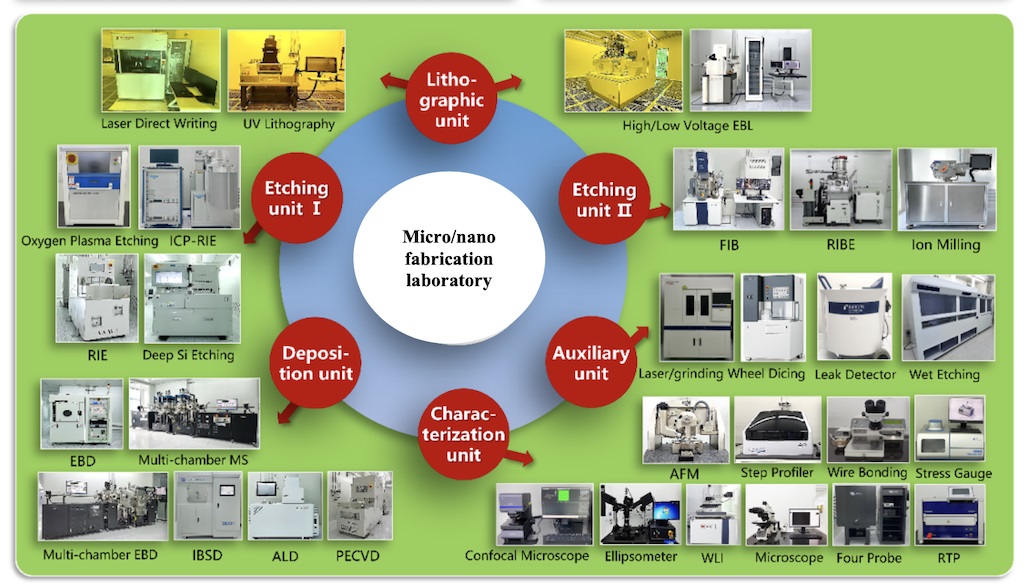
F1 Micro/nano fabrication laboratory
Click here for more details
Micro/nano fabrication laboratory mainly meets the necessary requirements of fabricating micro/nano-structures and devices for the users and systems of Synergetic Extreme Condition User Facility. The laboratory contains class 100 clean rooms and class 1000 clean rooms, where the class 100 clean rooms are yellow light areas, which can be used for lithography, developing and resist coating in different ways. And the class 1000 clean rooms are divided into 8 functional areas, which can be used for the lithography, deposition, etching and other fabricating processes of various materials, as well as the characterization of micro/nano- structures and the physical properties testing. The main fabrication process indexes of the laboratory are listed as follows: the minimum line width of electron beam lithography of 8 nm, the minimum line width of the UV lithography of 0.5 μm, the resolution of laser direct writing of 600 nm, the minimum line width of Si etching of 30 nm, the highest aspect ratio of Si etching of 30:1, and the slope angle of etching side wall of Si can be adjusted from 85° to 92°.
-
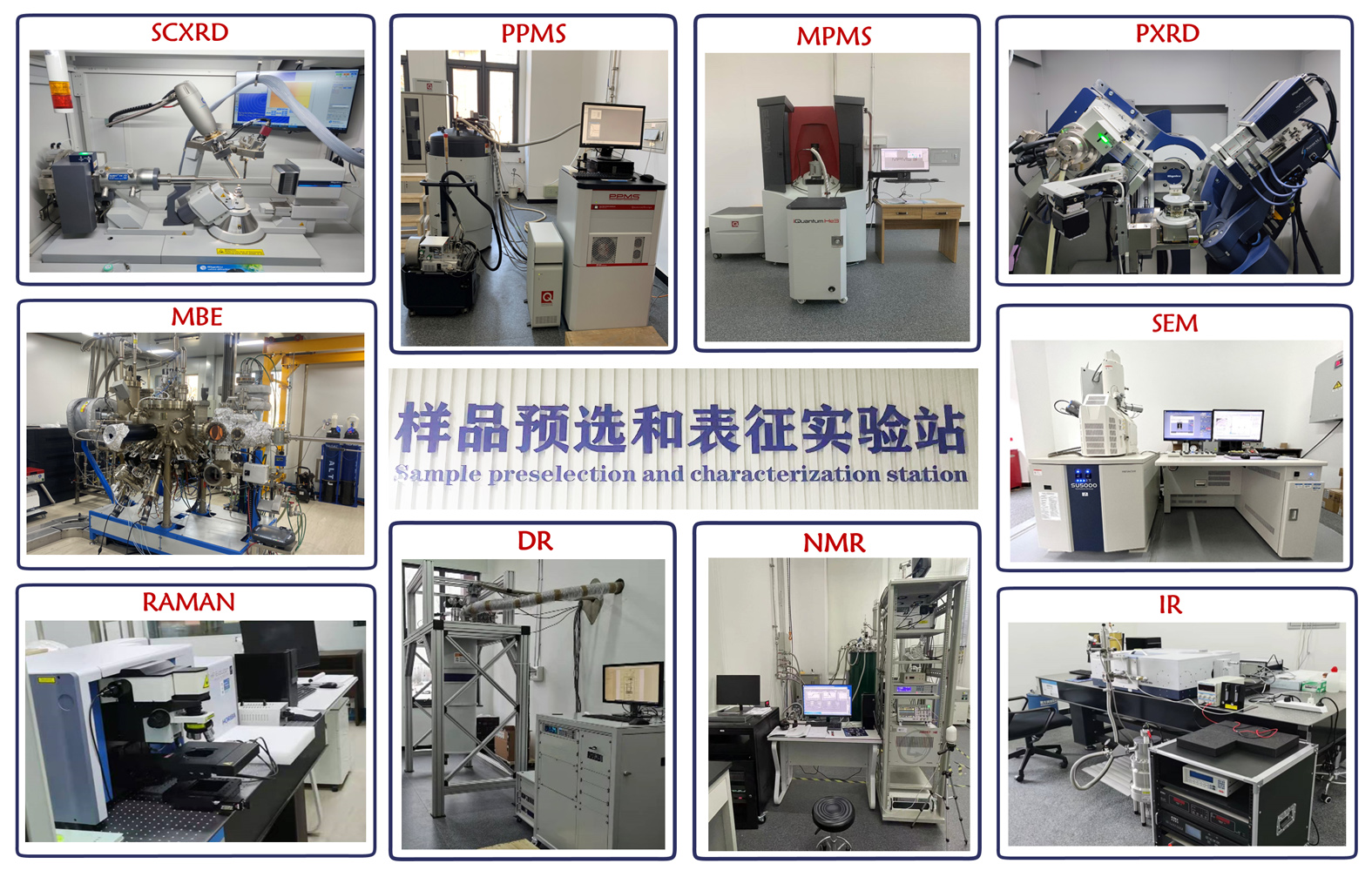
F2 Sample preselection and characterization station
Click here for more details
Sample preselection and characterization station is mainly to provide sample synthesizing and processing for each experimental station in the Synergetic Extreme Condition User Facility (SECUF), and through preliminary morphology, structure and property characterization, high-quality samples are preselected to make preparation for the next research under extreme conditions.
-
Combined Mode
The combined mode is used when a proposal requires the collaborative use of multiple experimental stations, primarily applicable for the proposal application about major scientific research project. -
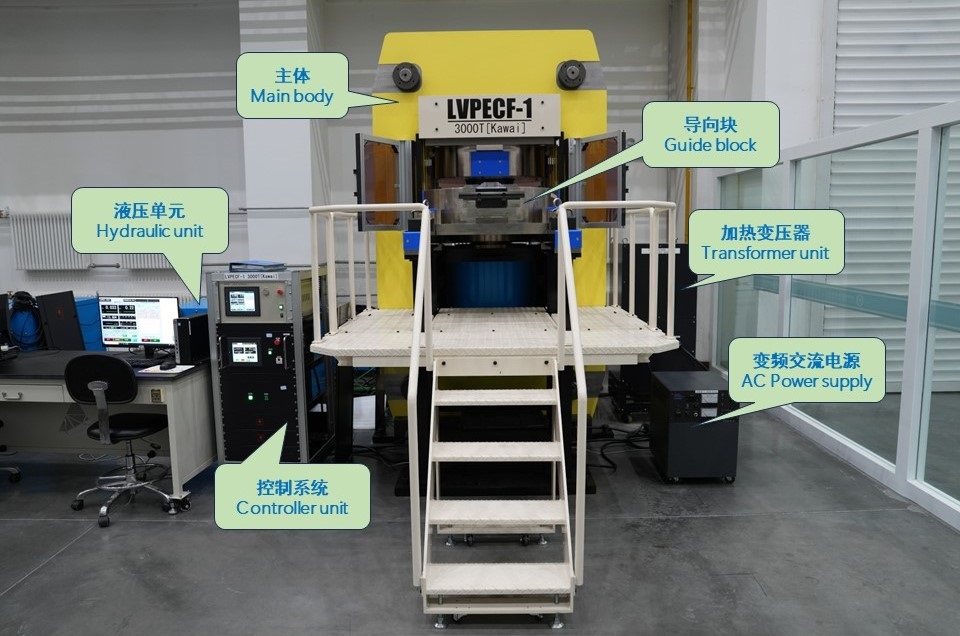
B1 Solid Environment High Pressure and High Temperature (SEHPHT) Station
Click here for more details
Solid environment high pressure and high temperature station is a system for conducting research related to HPHT extreme conditions for large volume materials. The experimental station mainly consists of a new generation of cylindrical high-pressure cavity ultrahigh-pressure generator (under construction) and a high-precision 2-6-8 octahedral compression cavity HPHT generator based on the two-sided top frame. While increasing the pressure of the existing large-cavity press, the volume of the sample cavity is increased. The cylindrical high-pressure cavity ultrahigh-temperature and high pressure generator can realize extreme conditions of 20 GPa, 300-2500 K on centimeter-sized samples after the completion of the device; the octahedral compression cavity high-temperature and high pressure generator includes 3000T Kawai, 1000T Kawai, and 1000T DIA-type high-pressure generator, which can achieve extreme conditions of 28 GPa and 300-2500 K on millimeter-scale samples,, which can expand the scope of research work related to ultrahigh-pressure high-temperature. The station is capable of carrying out research on the preparation of large-size new functional materials, in-situ measurements of the transport properties of matter at high temperature and pressure, high-pressure chemical reaction processes of matter, simulation of the deep Earth's environment, and research on Earth's minerals and celestial meteorites.
-
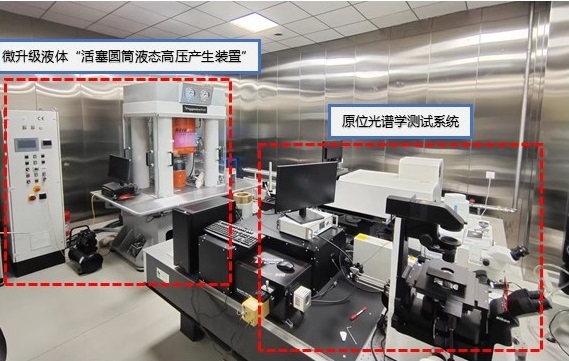
B2 Liquid Environment High Pressure and High Temperature (LEHPHT) Station
Click here for more details
The liquid environment high pressure and high temperature station is composed of high-temperature and high-pressure generating device and in-situ spectroscopy testing system. The high-temperature and high-pressure generation device is composed of two liquid environment large chamber pressure mechanisms, including hundred milliliter volume liquid environment "ultra high temperature and static high pressure apparatus " and microliter volume liquid environment "piston cylinder liquid high pressure apparatus". The hundred milliliter volume liquid environment "ultra high temperature and static high pressure apparatus " has a 100ml large volume sample chamber, which can provide a temperature and pressure environment of 500 MPa and 800 K for the liquid phase reaction environment in the sample chamber; The microliter volume liquid environment "piston cylinder liquid high pressure apparatus" has a large volume sample chamber with ten microliters, which can provide a temperature and pressure environment of 1.8 GPa and 1000K in the liquid phase environment.Meanwhile, the large chamber press is equipped with in-situ spectroscopy test system, including fluorescence microscope, Raman spectrometer, transient fluorescence spectrometer, Fourier transform infrared spectrometer and other instruments and equipment, which can realize in-situ spectroscopy measurement under high temperature and high pressure conditions during the operation of the large chamber press, and carry out deeper characterization of the physical property changes of substances under extreme conditions of high temperature and high pressure.
-

B3 Non-equilibrium High Pressure (NHP) Station
Click here for more details
Non equilibrium high-pressure extreme condition experimental station consists of controllable fast pressurizing high-pressure experimental device and uniaxial pressurizing high-pressure experimental device. The former sets up a fast loading high-pressure generating device in millisecond time resolution, which can achieve the extreme condition between dynamic and static high pressure for scientific research. The ultimate pressure of the device is 10 GPa. Relatively, the latter sets up a non equilibrium ultra-high pressure experimental device in spatial resolution, which can achieve compression and shear/torsion deformation of materials under non equilibrium high pressure. The device can provide conditions for the research of Changes in phase transition, mechanical/elastic properties and electrical properties of materials. The ultimate pressure of the device under deformation is 8 GPa.
NOTICE
-
Call for Proposals for HEPS Phase II Beamlines May 23,2022




